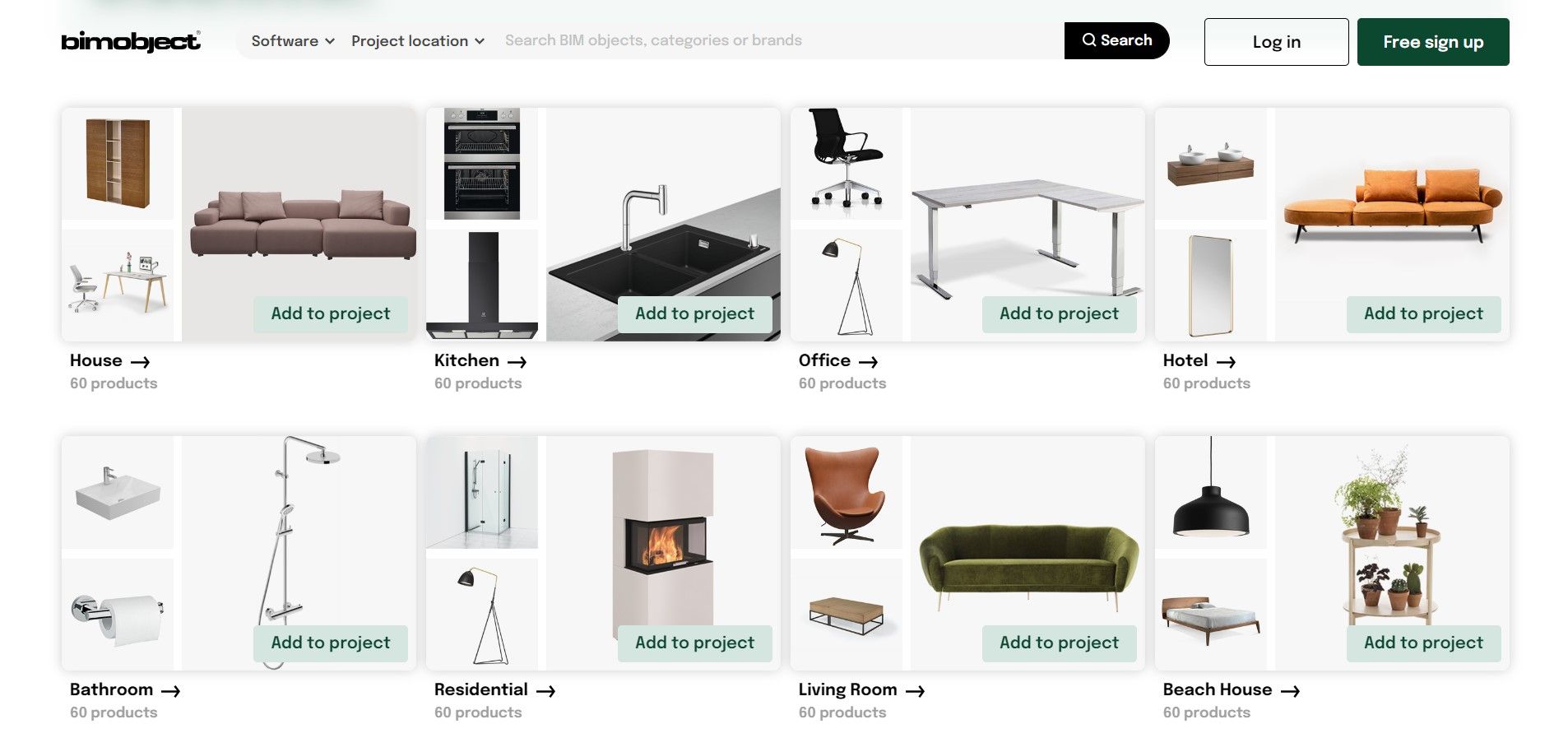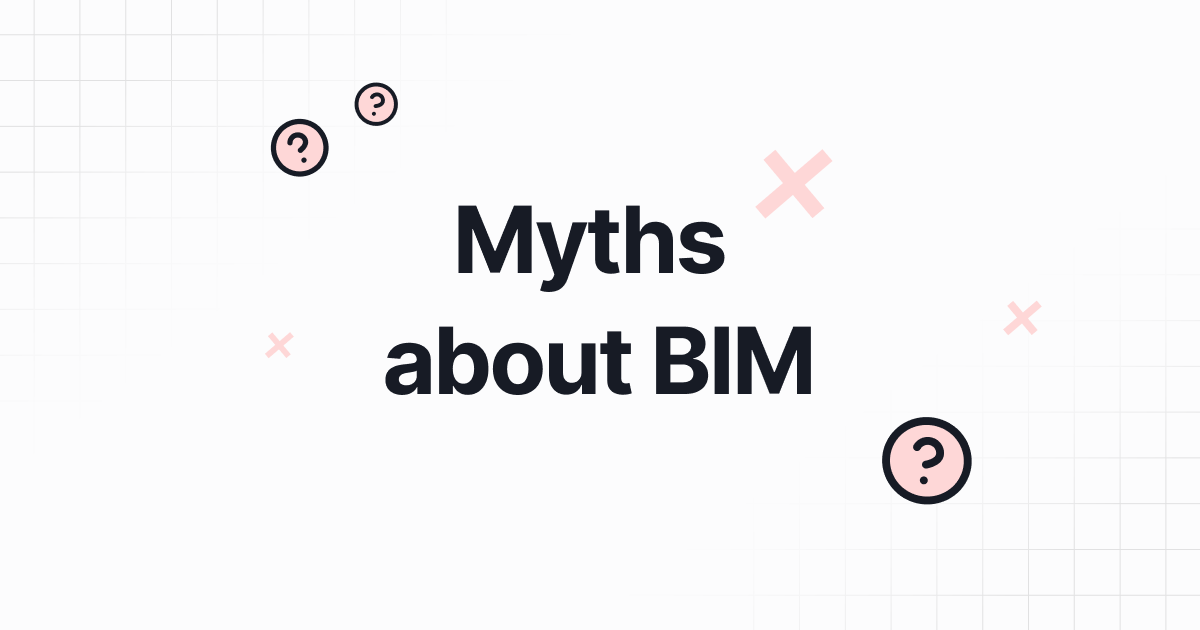Your Definitive Guide to Understanding BIM Objects in 2025

Table of Contents
AEC professionals can enhance their work efficiency by incorporating BIM objects in their workflows. With BIM starting to be recognised as a necessity, it becomes all more important to learn about the types and effective usages of BIM objects. This blog talks about the meaning of BIM objects along with its integration with popular software such as CAD and Revit along with its needs and usage.
Dive deeper to understand how it can benefit you and make your work easier!
What is BIM?
Considered the future of construction, BIM (Building Information Modelling) is a methodology for creating, managing and sharing digital built asset data at a multidisciplinary level throughout all project stages. BIM is no longer considered new technology, but many new modelling and information management features in the construction industry have stemmed from it. The aim is simple – to streamline the AEC workflows that are otherwise complex and time-consuming.
And that is also why we now have BIM objects.
What is a BIM object?
A BIM object is a 3D model of a product created in BIM software, containing detailed information about the product, along with the precise geometry of the product representing the physical characteristics. BIM objects can come in varying file formats that can be used in different BIM software such as Revit, ArchiCAD and Vectorworks etc. It includes IFC (Industry Foundation Classes) formats, open exchange and vendor-neutral platform, to provide interoperability across multiple platforms for different stakeholders.
How is a BIM object created?

BIM objects are rich in information as they’re a part of the project BIM model. But what information and why?
Along with geometrical information like dimensions, BIM objects are constructed with technical details that can show the functionality of the product in the real world. Think information from product data sheets. Such data becomes graphical data, including but not limited to, dimension, materials, colours and manufacturer’s information.
A BIM object can only prove its usefulness by having accurate and relevant information embedded in it. Only then it is a digital representation of, not only how the product looks, but also how it works.
Read more: 10 Emerging Technologies Transforming the Construction Industry
How do you use BIM objects?
Producing a BIM model of the project can be a painstakingly tedious process with so many details and even more information involved. BIM objects are used to coordinate the design process, usually starting with a generic BIM object as a placeholder. They are similar to CAD blocks we all are used to. The only difference is that the BIM objects are in 3D with metadata or product information. The intelligence of these models provides execution of specific tasks and coordination while also demonstrating the history of the design model.
Type of BIM objects
There are four types of BIM objects that are commonly used in Building Information Modeling (BIM) software and workflows. Here's more information about each type:
1. Layered Objects
-
These objects are composed of multiple layers or elements that can be adjusted independently.
-
Examples include walls, roofs, floors, and ceilings.
-
The layers can represent different materials or components, such as structural elements, insulation, finishes, etc.
-
Layered objects are flexible and can be modified to meet specific project requirements, making them useful for detailed design and documentation.
2. Component Objects
-
Component objects have predefined geometric shapes and dimensions.
-
Examples include doors, windows, furniture, and other building components.
-
These objects are typically parametric, meaning their properties (like size, material, etc.) can be adjusted within predefined constraints.
-
Component objects are often used for detailed design, visualization, and documentation purposes.

3. Generic Objects
-
Generic objects are placeholders or temporary representations used in the early design stages.
-
They are typically simple geometric shapes (like boxes or cylinders) with minimal detail.
-
Generic objects are used to represent spaces, volumes, or placeholders for future specific objects.
-
They allow designers to explore conceptual ideas and massing studies before committing to specific products or components.
4. Specific Objects (Manufacturer Objects or BIM Objects)
-
These objects are highly detailed and accurate representations of real-world products from manufacturers.
-
They often include comprehensive data such as materials, finishes, performance characteristics, pricing, and installation instructions.
-
Specific objects are typically provided by manufacturers or third-party content libraries.
-
They are used for detailed design, documentation, clash detection, quantity takeoffs, and other advanced BIM processes.
BIM objects play a crucial role in the design, construction, and documentation phases of a building project. They facilitate collaboration, coordination, and data exchange among project stakeholders. The different types of BIM objects cater to various stages of the design process, allowing for flexibility, accuracy, and efficient information management throughout the project lifecycle.
What are the benefits of using BIM objects?
BIM projects, being the direct 3D model representation of products, provide information on these products accessible to all project participants. It ensures the right project information circulation throughout the project stages. Using BIM objects can help project stakeholders reach informed decisions and go for the right design option. Moreover, BIM objects created by product manufacturers are even more reliable and are useful for cost estimation and analyses.
Another advantage of using BIM objects is efficient clash detection. As they are modelled using real-world dimensions, it becomes easy to detect clashes in the main BIM model and correct them to prevent further errors.
For manufacturers, it also gives better exposure to their products. Only by knowing a product inside out, the designers will also feel inclined to use them in the real world instead of finding other alternatives (which will involve finding necessary information all over again).

Read more: Most Impressive BIM Projects in the USA
Industry Standards for BIM Objects
Industry standards for BIM objects are essential to ensure interoperability, consistency, and quality in the Building Information Modeling (BIM) process. Several organizations have developed guidelines and specifications to standardize the creation, exchange, and use of BIM objects. Here are some key industry standards related to BIM objects:
1. IFC (Industry Foundation Classes)
Developed by buildingSMART International, IFC is an open and neutral data format for BIM object exchange. It defines a standardized set of data representations and transfer protocols to enable seamless data sharing among different BIM software applications . IFC is widely adopted by major BIM software vendors and is considered the industry standard for BIM data exchange.
2. COBie (Construction Operations Building Information Exchange)
COBie is an international standard that specifies the data structure and format for capturing and delivering building information during the construction phase and for use in facility management. It provides a standardized way to organize and exchange information about building components, products, and materials.
3. BIM Object Standards
Various organizations have developed standards and guidelines for creating and managing BIM objects:
- NBS BIM Object Standard (UK): Provides requirements for creating high-quality BIM objects, including geometry, data, and documentation.
- BuildingSMART Data Dictionary: A standardized library of terms and definitions used in BIM data exchange, supporting consistent and unambiguous communication.
- Proprietary Standards: Some BIM software vendors have their own proprietary standards and guidelines for creating and managing BIM objects within their platforms.
4. Product Data Templates (PDTs)
PDTs are standardized templates that define the required data and properties for specific types of BIM objects. They ensure consistency in the information provided for various building components and systems, facilitating data exchange and collaboration among project stakeholders.
5. BIM Object Libraries and Repositories
Several organizations and software vendors maintain libraries or repositories of BIM objects that comply with industry standards. These libraries provide access to pre-defined, high-quality BIM objects from manufacturers, ensuring consistency and accuracy in the modeling process.
Where can you find and download BIM objects?
BIM objects can be downloaded from various online library sites, most of which are created according to industry standards. These libraries work closely with manufacturers to create accurate representations of the product as BIM products. Some manufacturers may also set up libraries of their own to compile their products’ BIM objects.
Below is a list of BIM object libraries with NBS National BIM library and Bimobject being two of the largest sites where BIM objects are available with free access. Several software options are available and you can save the BIM objects to the BIM library to use.
• ACCA Software BIM object library
• BIMstore
BIM objects are created to aid the BIM workflows with accessible and manageable data for all project stakeholders. We can expect to find more manufacturers creating BIM objects of their products and BIM professionals to utilise them to their fullest potential.
Interested in learning the BIM process to improve your project workflows? Look no further! Check out Novatr’s BIM Professional Course for Architects and get started right away. Learn with students and professionals from around the world, led by industry experts working in top international firms.
We have more insights on BIM on our Resources page. So make sure to check it out.


 Thanks for connecting!
Thanks for connecting!

.png)




